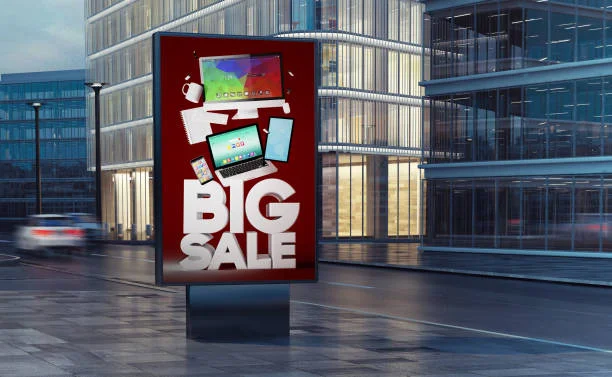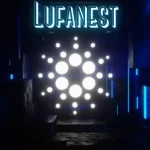Every morning, millions of people step outside into a world shaped subtly but powerfully by out-of-home (OOH) advertising. From bus shelters to towering billboards, these visual messages operate almost invisibly, guiding perceptions, influencing decisions, and creating the city’s visual language. This silent giant works without fanfare, yet its impact rivals any other marketing medium, blending seamlessly into daily life while shaping behavior and cultural awareness.
How OOH Shapes Our Environment Without Us Noticing
Out-of-home advertising functions as environmental architecture. It doesn’t just occupy space; it defines it. A building wall can transform into a communication canvas, a bus shelter becomes more than infrastructure, and highway corridors evolve into sequential storytelling channels. The genius of OOH lies in its integration with urban design: the most effective campaigns enhance functionality and aesthetics, making waiting for public transport more engaging or a long drive more visually stimulating. Even small installations—like branded benches, kiosks, or tram posters—can influence perceptions of a neighborhood, subtly reinforcing local culture while promoting brands.
Passive Influence: The Psychology Behind the Silent Giant
Humans are experts at peripheral processing—absorbing information while focusing on primary tasks. This makes OOH uniquely effective. A driver may concentrate on traffic yet subconsciously register billboard imagery, colors, and messages. Over time, this repeated peripheral exposure builds familiarity and preference, a phenomenon psychologists call the “mere exposure effect.” OOH creates subconscious brand associations, linking positive experiences to products or services without requiring active attention. This effect works across contexts—from a busy CBD street to a quiet suburban road—proving the silent giant operates in both high-traffic and low-traffic environments.
Cultural Landmarks: Advertising as Part of City Identity
OOH occupies a singular place in cultural life. Iconic installations like Tokyo’s neon signs, New York’s Times Square displays, or Shoreditch’s creative murals become more than marketing—they define urban identity. These campaigns reflect and reinforce local character, establishing authentic connections with communities. Shared exposure to these messages also contributes to collective experience, giving residents common reference points and subtly reinforcing social cohesion. Even temporary installations, like immersive pop-up ads or festival murals, can leave lasting cultural impressions, shaping how cities are remembered by both residents and tourists.
Don’t miss this next story—it’s packed with helpful info!
Efficient Reach: Why OOH Dominates Attention Economically
From an economic perspective, OOH delivers audience reach efficiently. The unavoidable nature of billboards, posters, and transit ads ensures repeated exposure, while cost per impression often falls below other media. Campaigns run continuously, generating millions of impressions over weeks or months. Geographic targeting—coffee ads near office buildings, automotive ads along highways, entertainment promotions in nightlife districts—enhances efficiency, allowing precise behavioral targeting without invasive data collection. These campaigns can also complement other media: a physical ad can reinforce online campaigns, improving overall marketing ROI.
Evolving Quietly: Technology Strengthens, Not Overpowers
Digital billboards and dynamic content enable OOH to evolve without losing its core strength: environmental presence. Ads can change based on weather, time of day, or real-time events, maintaining relevance while retaining large-scale visual impact. Advanced targeting allows different messages for different audience segments—morning commuters see coffee ads, evening traffic sees restaurant promotions—multiplying efficiency without additional physical infrastructure. Even interactive experiences, like augmented reality installations or QR code-enabled campaigns, allow engagement while preserving the silent, ambient nature of the medium.
Measuring Impact Without Disruption
Traditionally, measuring OOH effectiveness relied on estimates. Today, mobile location data, traffic sensors, and computer vision track exposure, attention, and even emotional response. Advertisers can link offline exposure to online engagement and in-store purchases, transforming OOH from a branding tool into a measurable marketing channel. For example, a digital billboard campaign for a new product can track increased store visits in the surrounding area, proving the silent giant delivers both awareness and actionable results.
Sustainable and Socially Responsible Influence
Modern OOH increasingly reflects environmental and social responsibility. Solar-powered digital screens, recyclable materials, and aesthetically integrated installations reduce impact while enhancing public spaces. “Advertising with purpose” campaigns address social issues, provide public services, or celebrate community achievements. These strategies amplify brand equity while contributing positively to the urban environment, reinforcing OOH’s quiet, enduring presence. Some campaigns even incorporate functional benefits, like real-time transit updates or weather notifications, creating value for communities while maintaining commercial impact.
A Steady Force Amid Digital Fragmentation
As digital media becomes fragmented across devices and platforms, OOH provides a unifying presence. It reaches broad audiences through shared experiences, building awareness and cultural moments beyond demographic targeting. When integrated with digital strategies, physical campaigns enhance credibility, awareness, and engagement while offering audiences a respite from intrusive online ads. In a world of constant notifications and algorithmic feeds, OOH’s persistent yet non-intrusive visibility becomes a rare and valuable marketing channel.
Preparing for the Future: OOH in Smart Cities
The future of OOH lies in integration with smart city infrastructure. Advertising installations could deliver commercial messages alongside public services like traffic updates or emergency alerts. This multifunctional approach addresses criticism of commercial intrusion, transforming OOH into valuable urban assets that contribute meaningfully to city life while maintaining its silent, pervasive influence. Connected sensors and AI could allow OOH to respond to real-time urban conditions, blending utility and advertising seamlessly.
The Invisible Foundation That Supports Brands
OOH’s power stems from its seamless integration into daily routines. Like traffic signals or street lighting, it works best when unnoticed yet consistently present. This persistent exposure builds brand recognition, familiarity, and trust without interrupting attention, providing a stable foundation for marketing and cultural influence. Its quiet omnipresence reinforces brand presence even when other media channels fail to reach fragmented audiences.
The Quiet Power of Persistent Presence
Understanding OOH as a “silent giant” highlights its subtle yet potent influence. It operates through environmental presence, passive engagement, cultural integration, and efficient reach. As cities grow and digital media fragments, OOH remains a constant, shaping how people experience urban life, recall brands, and make purchasing decisions. Its quiet, persistent presence is a testament to the enduring strength of advertising that works without shouting, a true silent giant in our everyday lives.
You’ll find even more guides and resources on 2A Magazine.







